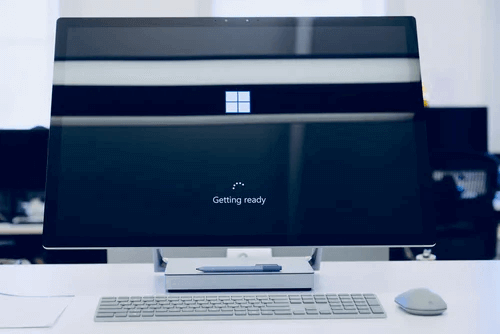Software as a Service is one of the most used services that enable companies to connect their application data on the Internet using tech-savvy cloud-based solutions. This technology allows for both large corporations as well as startups to manage the expenses and considerably reduce operating costs, mainly working on the pay-as-you-go approach. The size of the SaaS market is rapidly and steadily growing. Since 2013, revenues have increased from $17.5 billion to $101 billion by 2019. SaaS not only empowers corporations to customize mobile application software but also gives limitless opportunities to keep up with the latest tech trends. Let’s do a quick flashback to how Software as a Service evolved with time, what SaaS solutions 2020 has brought, and how to maximize your business operations with SaaS industry trends.

SaaS Industry: Key Facts and Overview
For starters, it is worth mentioning that the industry has low costs for entry, meaning that it is affordable for large corporations and startup businesses. One of the driving reasons for obtaining SaaS software is that it finally dismissed the need to invest in purchasing and maintaining hardware to run, customize, and configure the developed apps locally.
All SaaS services have a cross-platform feature, meaning that the users can access the data from any device. Moreover, contrary to traditional on-premise software services, this technology gives a broader range of ERP programs, software for HR activities, CRM suites, and covers payment and accounting programs.

How SaaS Evolved: A Brief History
Since its very beginning in the late 1960s, SaaS has offered tremendous benefits for large companies that managed massive hardware and extensive computers. From profitable organizations to governmental entities and educational establishments, it provided interconnection along with smart costs and cloud-based solutions.
It was the company named IBM that introduced enhanced services for data storage and exchange to make the best out of business operations through cloud computing. In the 1990s, when the world started to experience vast and demanding popularity of the Internet, Google unfolded the great benefits of SaaS and founded Oracle and Adobe. Today, they are still competitive and recognized Software as a Service providers. Already in 2000, Salesforce announced the decision to run a SaaS service.
Starting from a chain of implementations of SaaS trends, these days, an average company spends around $20,000 for using SaaS subscription programs.
How The Industry Managed COVID-19?

We have already seen how COVID-19 affected grocery delivery business and food delivery applications; let’s see if any vital and devastating discrepancies occurred in this industry during the global pandemic lockdown.
22.5% of companies that participated in a Statista survey have not seen any impact of COVID-19 on SaaS. At the same time, only 11.6% of the respondents reported that spending on SaaS decreased by at least 20% since the pandemic. SaaS has remained afloat despite this large-scale chaos and has introduced trends in the SaaS industry to help other companies boost business operations, come up with new products, and resist the effects of COVID-19.
What to Expect from the Future of SaaS in 2020/21
With an ever-increasing number of companies applying SaaS to their business operations, it is crucial to understand what they expect from this industry. Consequently, these expectations are shaping the SaaS trends for 2020.
Consistent Growth. Companies want to cover even more needs than before to solve their problems. They expect their processes to run more quickly, efficiently, and innovatively.
Communication. One of the most decisive factors that drive customers towards purchasing a product or using a service is the feeling that the company keeps in touch: communicates, values their desires, and meets their needs. Clients want to be able to share their feedback and know that their suggestions and opinions matter.
Customization and Flexibility. With the rise of technologies, users want more than just easy-to-use and appealing applications. These would include offering even more subscription options, personal packages, and unique services.
Security. Technology trends consequently lead to malware happening on the Internet. Therefore, companies need to be extremely attentive in terms of implementing the latest trends in security to protect data exchange.
Why You Should be Interested in SaaS Industry Trends for 2020
Before we delve into the trends in SaaS, let’s define the reasons why SaaS might boost your business, give you a competitive advantage, and bring you more users.
Low Costs
As mentioned earlier, SaaS has low entry costs and saves you money on maintenance and upgrades. A typical customer only pays for the features in use that come with proven licensing and security certificates.
Time-Saving Feature.
It is sometimes challenging for a company to install and maintain an application. Luckily, SaaS enables companies to install and run the application anytime they have an Internet connection.
Scalability.
With no exclusion, all providers within this industry offer a rich and diversified list of subscriptions to meet the financial capacities of their users. It is particularly beneficial in times of business growth, as you can easily change the subscription once you start managing more employees and developing your platform.
Software as a Service Trends for 2020
Now, it is time to take a look at SaaS industry trends for 2020
Trend #1 Artificial Intelligence for Security Matters
With the mere purpose of protecting users from cyber and ransomware attacks, AI algorithms can strengthen the aspects of software data security. It can easily and quickly identify a threat and eliminate it before it damages the application.
Trend #2 More Products to Enable Remote Work Run Smoothly
Since COVID-19 forced most companies to change from office-based work to work-from-home, we can expect more tools that guarantee communication with employees is preserved. Corporations need to have different video-conferencing tools and internal corporate communication channels to connect with the employees no matter where they are.
The 68% increase in enterprises saying cloud computing is critical to their operations reflects their belief that virtual organizations will only continue to grow,
Louis Columbus, Senior Contributor in Forbes.

Trend #3 Blockchain Technologies
Another considerable advantage of SaaS trends in 2020 is the invasion of blockchain technologies.It is the responsibility of blockchain to bring new life to transparency in SaaS, making them disparate. With the features of decentralized databases, blockchains not only enhance the services and offerings but also solves numerous security matters.
Trend #4 More API Integrations
It is always challenging, time-consuming, and expensive to create and maintain a completely new IT infrastructure. Most SaaS businesses will introduce more API integrations to facilitate the development of the IT environment. With this Software as a Service trend in 2020, companies will be able to complete more tasks, support cloud-based backend, and be more visible on the global arena. API integrations will be in demand among customers since they can add more features to their applications without spending much time and money.
Trend #5 Vertical SaaS
There are primarily two types of SaaS: horizontal and vertical. Most companies that use SaaS have started with the traditional horizontal one as it helps in targeting more users and covers numerous fields. However, when the business scales up with unique features, the vertical model helps to meet these customized needs, which include the services of analytics and Repsly, among others.
Trend #6 Unbundling SaaS
As the number of startups is rapidly growing, the rise of unbundling is essential to keep them afloat. Since startup applications cannot run all-features platforms as it involves more costs and big teams, APIs will add on the necessary features to the software without spending extra money.
Not offering a full-featured SaaS but allowing customers to tailor their own experiences and pay for just what they use is what fuels the micro-SaaS innovation today,
SVP of Digital Systems & Technology at Cognizant.

Trend #7 Micro SaaS
Since the market has many powerful dominators, some niche but core offerings still must be covered. MicroSaaS is defined as a set of solutions designed by a team or one person that complements the existing features of SaaS products. The benefit of micro SaaS is that it doesn’t involve many costs and has high margins.
Trend #8 Changes in Pricing
To meet the needs of customers and increase their number, SaaS companies decided to change the pricing to offer flexibility. At the same time, this change doesn’t affect the quality of services but, on the contrary, gives even more space for users’ growth. The top working pricing strategy so far has been pay-as-you-go, when clients smartly manage their costs by paying for the features they use.
Trend #9 SaaS and PaaS Union
Since PaaS services enable corporations to create customized applications and retain customers, many SaaS clients have switched to PaaS. With this in mind, this migration will make a big difference for corporations.
Trend #10 White Labeling
Probably one of the most recognized future trends is white labeling that allows companies to enter the market quickly, build entirely new solutions from scratch, and gain a competitive advantage thanks to a variety of interfaces and SaaS features.
Wrapping Up
SaaS trends have been in extreme demand as they allow companies to scale up business with ease. More and more companies are adopting Software as a Service solutions to build functional, reliable, and easy-to-use CRM, HR systems, and API integrations to enhance application functionality. SaaS in 2020 will be able to cover even more business needs through API connections, migration with PaaS, and Micro SaaS offerings. Luckily for companies that are willing to implement cloud computing, the IT market offers a variety of SaaS development services to meet business needs and deliver cutting-edge solutions.
Using our immense experience in SaaS, KeyUA specialists will unfold numerous SaaS solutions and help you launch a modern application!
Contact us







 Unit 1505 124 City Road, London, United Kingdom, EC1V 2NX
Unit 1505 124 City Road, London, United Kingdom, EC1V 2NX

Comments
Leave a comment